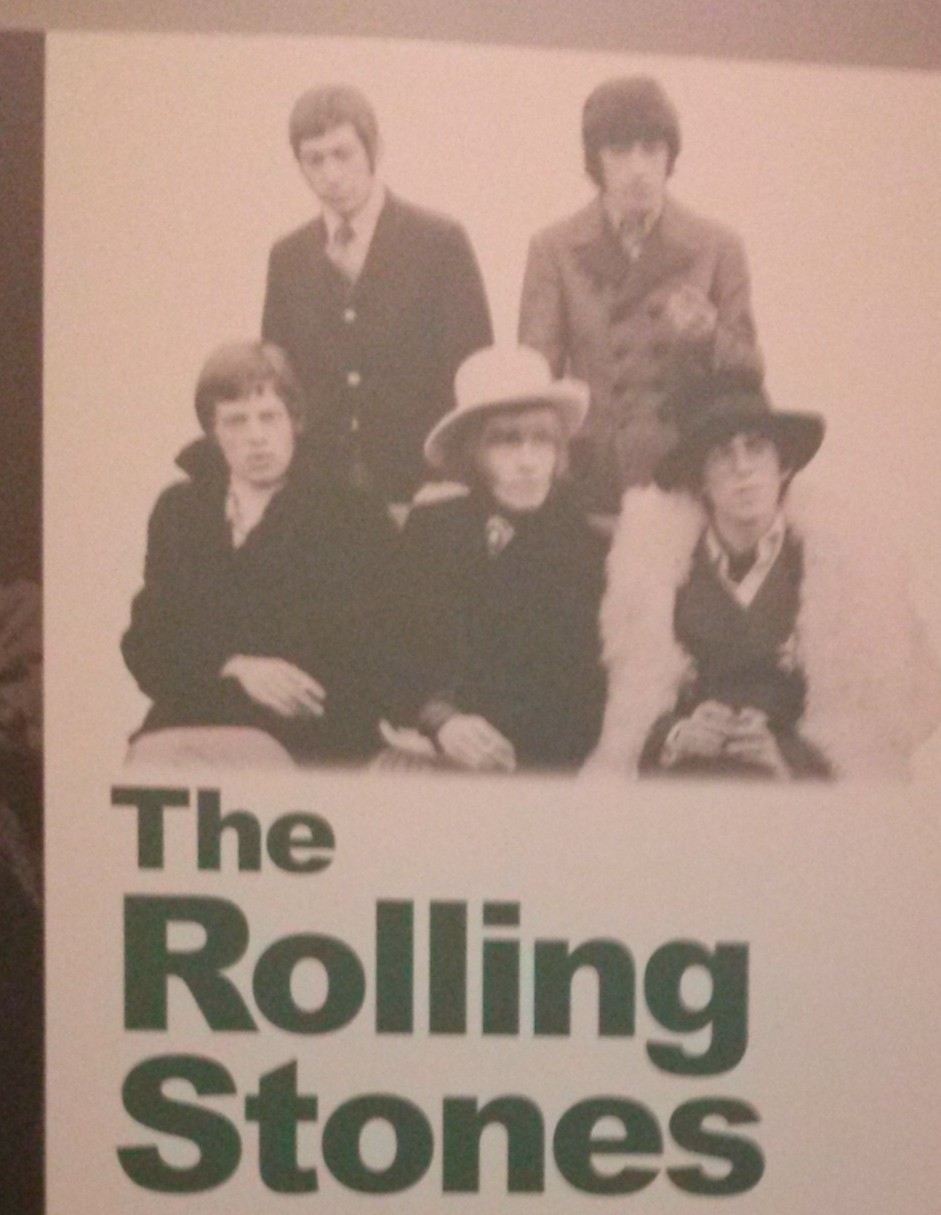Big Lips, Hot Legs, Explosive Tempers, and Going Solo: A Comparison of The Ike and Tina Turner Revue and The Rolling Stones
Chapter 2: A Rolling Start

Photo: Top portion of The Rolling Stones introduction panel, at Rock & Roll Hall of Fame exhibit, Cleveland, Ohio, taken by the author, 17 September 2014.
Mick Jagger and Keith Richards knew each other as kids during their 1940s and 1950s schooling at Wentworth Primary School in Dartford, Kent, England, but lost touch during their adolescence. When both were nineteen, they bumped into each other at the Dartford train station. Mick had an armful of records with him that attracted Keith’s attention. They both talked about music, and decided to see more of each other, thus laying the foundation for what became a huge international mega-group. From 1961-1963, with additions and departures of members, the band settled on the first track of The Best of Muddy Waters album as their name. By 1964, The Rolling Stones had an solid reputation for performing American rhythm and blues covers to UK audiences. They then began to craft their original sound into their own pop brand.
Band members included Mick Jagger, an Englishman singing like a black American blues singers, guitarist Keith Richards, the bad-ass introvert and the human dynamo of guitar riffs, Bill Wyman on bass, bebop loving Charlie Watts on drums fusing jazz to rock ‘n’ roll, and Brian Jones on guitar and other instruments, whom gave the band some distinctive sounds during his tenure, and Ian Stewart on piano. In the early days, Brian Jones was considered the leader of the band, and Ian Stewart guided the band in navigating the club scene. Their manager Andrew Oldham told the group that they could only have five band members on their album cover, so Ian Stewart stepped aside as an official member of the Stones. He remained as their road manager and unofficial pianist. Thus began a trend within the band of having official
bandmates and paid but unofficial bandmates. Oldham also forced Jagger and Richards to write original material by reportedly locking both up in a kitchen. Why wasn’t Brian Jones included? He wasn’t around at the time. It was the beginning of the end for Jones as a Stone.
By 1964, The Rolling Stones had an anti-pop noir attitude that attracted British audiences to their shows and sold records. They didn’t mirror the clean cut early 1960s Beatles. Like the Beatles, their female fans went wild, causing security around the band to be tight. Their first United States tour wasn’t as successful as the Beatles, but it did land them on The Ed Sullivan Show. They performed Time is on My Side
to screaming girls in the audience. From 1964-1966, The Stones had hits on both sides of the pond with Get Off of My Cloud,
their risque (I Can’t Get No) Satisfaction,
their ballad As Tears Go By,
and Paint It Black,
with the latter two titles showing The Rolling Stones’s willingness to experiment with other sounds. It was the beginning of their worldwide rock music domination during the next twenty years.